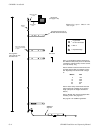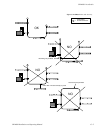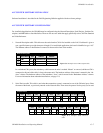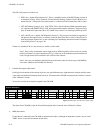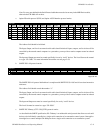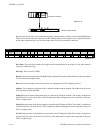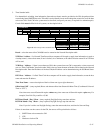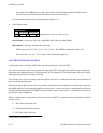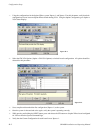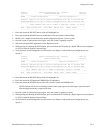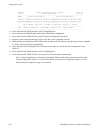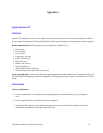
CM 4000 / AccuSwitch
G−12 CM 4000 Installation and Operating Manual
For example, if the SMPTE time code source were to fail the CM would attempt switch to the SNTP source; if
that source was not available then the CM hardware clock would be used, etc.
For a more technical discussion of CM time keeping, see page G−12.
6. Video Reference table.
Sync Standard
1
Video Reference
Sync Standard Sync StandardHorizontal Line
Figure G−14. Example Video Reference table.
Sync Standard − choices are NTSC, PAL, 1080i 60Hz, 1080i 50Hz, and 1080i 59.94Hz.
Horizontal line − this entry determines the switch point.
NTSC choices are 9.5, 10, 10.5, 11, 11.5, 12, 12.5, and 13. The SMPTE recommended setting is 10.5.
PAL choices are 5.5, 6, 6.5, 7, 7.5, 8, and 8.5. The recommended setting is 6.5.
ACCUSWITCH TIME MANAGEMENT
AccuSwitch tracks two time lines, SMPTE time code and an internal real−time clock (RTC).
Time code is used for short−term, frame−accurate switching. Since NTSC video signals run at 29.97 frames per second, drop−
frame time code accumulates an error of 2.2610 frames per day. This amounts to +75.442 milliseconds of drift every 24 hours,
a discrepancy larger than two seconds every month.
The real−time clock is used to accurately track time long term. This clock is synchronized with other sources based on the
entries in the Time Standard table.
If time code is present, the real−time clock’s hours, minutes, and seconds will be synchronized to it. If time code is not present,
the SMPTE time line will be synchronized with the real−time clock (i.e., the real−time clock is a backup time line). However,
AccuSwitch inhibits adjustments to the SMPTE time line when the system is under a load (i.e., the time line will only be ad-
justed when nothing is happening).
When a valid time code is not present, the real−time clock will use SNTP
1
to synchronize with the specified sources in the
following order:
1) TCR (Time Code Reader) Host
2) NTP (Network Time Protocol) Host
3) RTC (Real−Time Clock) Host
1
Simple Network Time Protocol



